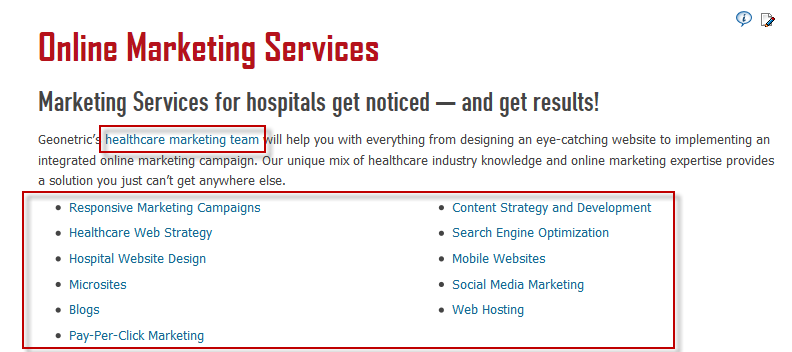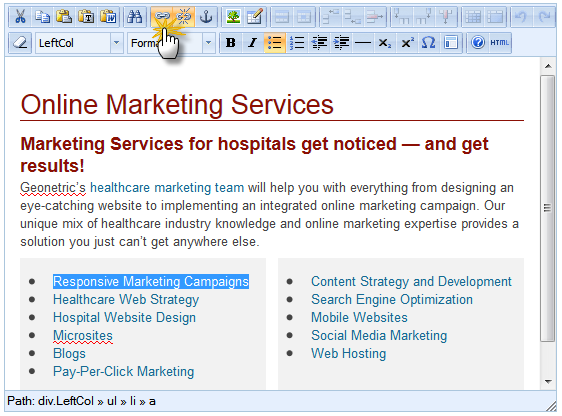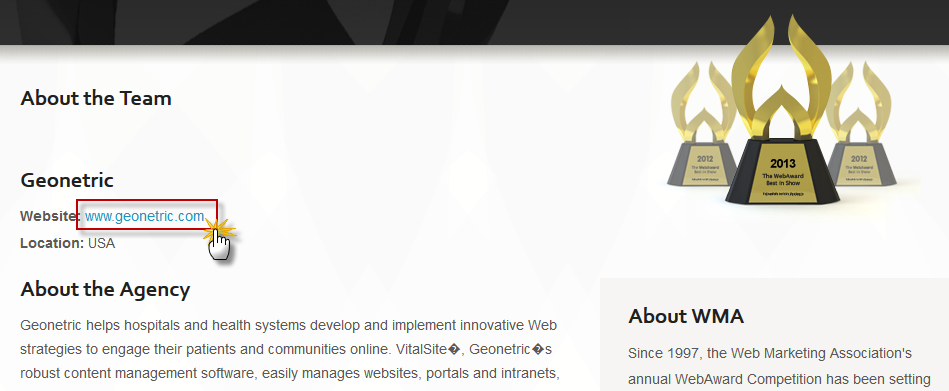In An Introduction to 404s, Broken Links and Hospital Website Hygiene, we introduced 404 errors, what causes them (typically, broken links), and explored why it’s important to fix them.
In short, we fix broken links because 404 errors often represent bad user experience and missed opportunities to maximize the business value of our hospital websites. Unfortunately, not all broken links are the same… and some you may even want to ignore. How do you tell the difference? The first step is in understanding the multiple types of links that exist on and that point to your hospital website.
Internal Links

Internal links are links that you (or your staff) placed on your pages and that link to other pages on your website. When they are broken, users see 404 errors on your site instead of the content they expect to see when they follow a (broken) link.
Don’t think this matters? Reflect on this question: how many broken links does a visitor need to encounter on your website before they begin to associate your brand with difficulty, error and failure?
Not many. And whatever the number, it’s probably not the emotion you want visitors to associate with your brand.
The good news is that you can avoid this. Since internal links are, by definition, links that you’ve made… they are also links that you can easily fix when broken. Once you discover such a link, edit the page (or panel) that contains it and fix the link so that it points to the correct destination.

If the destination no longer exists and there is no equivalent destination to direct visitors to, then you’ll probably want to remove the hyperlink altogether. If you do this, make sure to review the surrounding content in its entirety. Often the context of the content will suggest a hyperlink. If you remove a hyperlink without revising the content around it, your readers will likely be confused.
Outbound Links

Outbound links are hyperlinks you (or someone in your organization) placed on your website that link to destinations off your website. For example, your cardiac care pages may link to some authoritative resources on the American Heart Association’s (AHA) website. If those resources are removed by the AHA (or their URLs change), your links will be broken, and users clicking them will experience a 404.
Like broken internal links, broken outbound links reflect poorly on your brand. A profusion of them suggest that the basic principles of website hygiene are being ignored, and visitors may lose trust in your site. And even though the resulting 404 error appears on the destination website and not on your own, it’s your hyperlink that is broken and site visitors will blame your site when the link you provide serves them an error message instead of the content they were looking for.
The unfortunate thing with outbound links is that even if you’re a very conscientious webmaster, you have little control over the external resources you link to. Links will break without warning, and you may not even know it. Fortunately there are ways you can stay ahead of such problems. We’ll cover strategies for identifying these in our next post, Finding Broken Links and Fixing Them With VitalSite Redirects.
Inbound Links

Our last category of links are those that you have little control over. If you’re doing your job right and your hospital website is a trusted and authoritative resource on the web (and in your community), you’re going to have external people linking to your website. Chances are, you may even have a great many of these inbound links.
These inbound links represent external people recommending your brand, and these are obviously important to most marketers. In addition, inbound links also influence how your web pages perform in search (for most search engines). Pages on your website that are frequently linked to with similar anchor text will tend to perform better in search results for queries containing terms used in that anchor text.
Unfortunately, as you curate your website content… or even go through Web redesigns and updated site launches, you run the risk of breaking all these “earned” inbound links. As a marketer, you should be loath to throw away any quality backlink that you’ve earned.
Because of this, it is important to fix broken inbound links whenever possible. Not only does this maintain the SEO benefit, but it’s important that visitors arriving on your website from external sources are met with the type of content they expected to find.
With internal and outbound links, the fix is relatively easy: find the content on your website containing the problematic link, and fix it.
With inbound links, the work can be more difficult. To fix a broken inbound link, you either have to contact the webmaster of the external site and ask them to update their hyperlink, or you have to redirect visitors who follow that broken link to a relevant resource on your website.
Most webmasters find it a more economical use of their time to use redirects to address broken inbound links than to reach out to webmasters every time they identify a problem with an external website linking to their site.
In tomorrow’s post, Finding Broken Links and Fixing Them with VitalSite Redirects, you’ll learn several easy ways to identify broken links on your hospital website. We’ll also cover the best ways to fix them you retain the best SEO benefit while providing your site visitors with the best user experience possible.